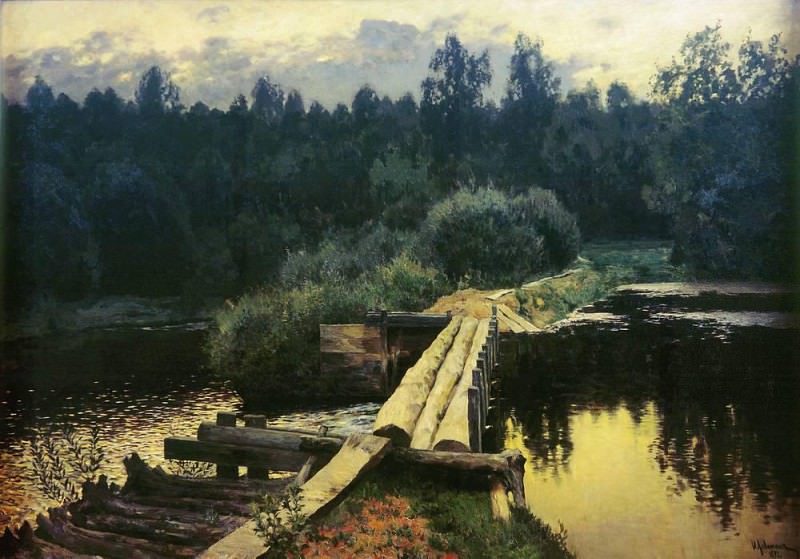Y pool. 1892 Isaac Ilyich Levitan (1860-1900)
Isaac Ilyich Levitan – Y pool. 1892
Edit attribution
Download full size: 1000×698 px (0,1 Mb)
Painter: Isaac Ilyich Levitan
The canvas "At the Pond" was painted by Isaac Levitan in 1892. This painting is the property of the State Tretyakov Gallery. Many call this canvas gloomy and sad, full of anxiety and hidden despair. Critics estimate that the clouds rising over the overcast sky and the setting sun symbolize the seal and depressed state of the author. The painting is credited with mysticism and mystery due to the sprawling forests not far away, hidden by twilight.
Description of Isaac Levitan’s painting "At the Pond"
The canvas "At the Pond" was painted by Isaac Levitan in 1892. This painting is the property of the State Tretyakov Gallery. Many call this canvas gloomy and sad, full of anxiety and hidden despair.
Critics estimate that the clouds rising over the overcast sky and the setting sun symbolize the seal and depressed state of the author. The painting is credited with mysticism and mystery due to the sprawling forests not far away, hidden by twilight. They seem to come right up against the viewer and, were it not for the rickety bridge, are ready to engulf him with their dark, cold foliage. The spherical shrubs have already gotten too close to the crossing and begin to slowly descend down to the river.
The bridge looks very symbolic; it divides the lane into two parts in the center in a vertical direction and draws attention to itself. It is not immediately obvious, but on both sides of the wooden ford the picture is very different. Down on the left you can see choppy waters, mottled with a mass of small waves, from the wind or strong currents, the moisture is literally riddled with irregularities. Just to the left, closer to the viewer, there is a dark wooden road, skirting at the maelstrom.
On the right is a completely different picture. The water is flat and smooth as a stretched drum, the eye glides over the fertile land, overgrown with lush grass, which ends at the bridge. It would seem that these two parts are separated by only three logs, but the character of nature changes dramatically. The thin bridge seems to pass between two worlds, life is silent in this remote place and the viewer himself can choose which way to go: calm and sunny or harsh and exciting.
The choice is multifaceted. Not for nothing, Levitan draws exactly three logs as a border. In this we see a truly Christian symbolism. Perhaps the artist is thus saying that any choice is, after all, predetermined.
Кому понравилось
Пожалуйста, подождите
На эту операцию может потребоваться несколько секунд.
Информация появится в новом окне,
если открытие новых окон не запрещено в настройках вашего браузера.
You need to login
Для работы с коллекциями – пожалуйста, войдите в аккаунт (open in new window).


















You cannot comment Why?
The painting depicts a rustic wooden bridge constructed from several large logs spanning a tranquil body of water, likely a river or pond. The bridge appears somewhat weathered, with visible planks and logs showing their natural texture, suggesting a sense of age and utilitarian purpose. It leads from a grassy bank, dotted with red flowers, towards a dense, dark forest that forms the backdrop of the scene.
The water reflects the overcast sky and the surrounding greenery, with shimmering highlights catching the light, creating a gentle ripple effect. The lighting suggests either early morning or late evening, with the sky a mix of pale yellow and grey clouds, casting a diffused light over the landscape. The overall atmosphere is serene and natural, evoking a sense of rural quietude.
Subtexts: